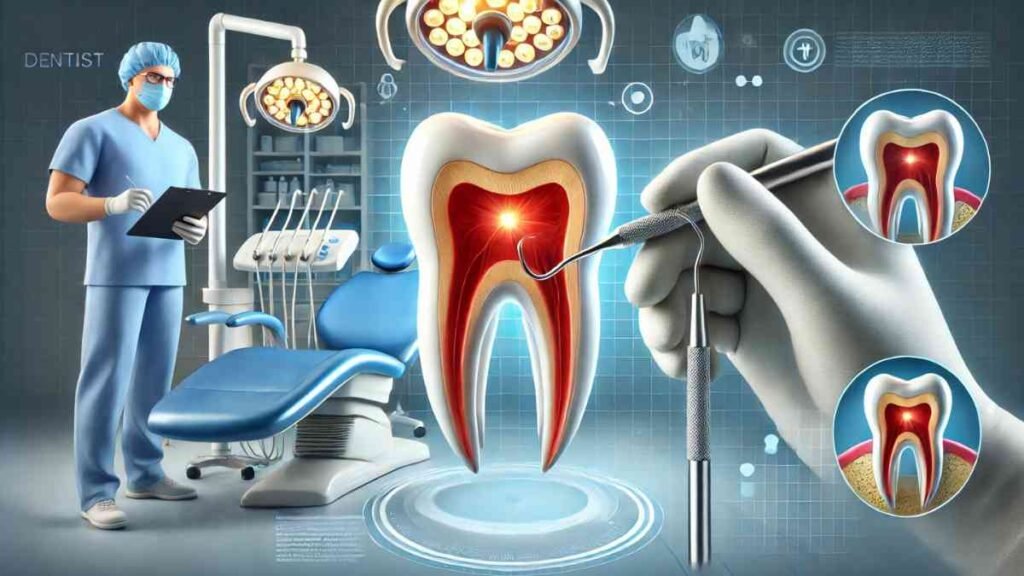The root canal cost without insurance typically ranges from $620 to $1,472, depending on the tooth’s location and the complexity of the procedure. Front teeth are generally less expensive, while molars cost more due to their intricate structure. Additional expenses like X-rays, anesthesia, and dental crowns can bring the total to $2,000 or more. However, affordable options such as dental schools, payment plans, and community clinics can help manage costs effectively, ensuring you receive necessary dental care without breaking the bank.
Table of Contents
ToggleIntroduction: Why Understanding Costs Matters
Dental care can often feel overwhelming, especially when facing a procedure like a root canal without the safety net of insurance. In this guide, we’ll dive into the root canal and crown cost without insurance, exploring average prices, factors affecting the cost, and ways to manage expenses effectively.
What is a Root Canal and Why is it Necessary?
A root canal is a procedure aimed at saving a tooth that has been severely damaged by decay or infection. Dentists remove the infected pulp, clean the root canal, and seal the tooth to prevent further damage. While the procedure is effective, it often comes with a significant price tag, especially when done without insurance.
Average Root Canal Costs Without Insurance
The cost of a root canal can vary widely based on the tooth type, geographical location, and the dentist’s expertise. Here’s a general breakdown:
- Front Teeth (Incisors and Canines): $620 – $1,100
- Premolars (Bicuspids): $705 – $1,250
- Molars: $870 – $1,472
Additional Costs
- X-rays: $50 – $150
- Anesthesia: $60 – $100
- Dental Crown: $800 – $1,500 or more, depending on the material.
Factors Influencing Root Canal Costs
- Tooth Type: Molars are more complex to treat, increasing the cost.
- Dentist’s Expertise: Specialists such as endodontists may charge more.
- Geographical Location: Urban areas generally have higher costs compared to rural settings.
- Additional Procedures: Crowns or fillings required after the root canal can significantly add to the expense.
How to Reduce Root Canal Costs Without Insurance
If you’re uninsured, managing dental expenses can be challenging. Here are some strategies to make it more affordable:
1. Payment Plans
Many dentists offer payment plans, allowing you to spread the cost over several months.
2. Dental Schools
Supervised student clinics often provide treatments at reduced rates.
3. Discount Plans
Enroll in a dental discount plan for savings on procedures.
4. Community Clinics
Non-profit or government-funded clinics may offer sliding-scale fees based on income.
5. Health Savings Accounts (HSAs)
If you have an HSA or FSA, you can use it to cover dental procedures.
Importance of Dental Crowns After Root Canal
A crown is typically placed over a tooth after a root canal to restore its strength and functionality. Without it, the tooth may become brittle and prone to fractures.
Crown Cost Breakdown
- Porcelain Fused to Metal (PFM): $800 – $1,200
- All-Ceramic or All-Porcelain: $1,000 – $1,500
- Gold Crowns: $1,200 – $2,500
Alternatives to Root Canals
In some cases, tooth extraction may be a more affordable option. However, it’s important to weigh the long-term impact on oral health, including the cost of dental implants or bridges to replace the extracted tooth.
Conclusion: Planning for Affordable Dental Care
Facing the root canal cost without insurance can be daunting, but understanding the process, exploring affordable options, and planning ahead can help manage expenses. Investing in your dental health now can save you from more significant costs and complications in the future.
FAQs About Root Canal and Crown Costs Without Insurance
1. Why are root canals so expensive?
The procedure requires specialized skills, advanced tools, and additional materials like crowns.
2. Can I skip the crown after a root canal?
It’s not recommended, as a crown protects the tooth and ensures longevity.
3. Are there risks to delaying a root canal?
Yes, untreated infections can worsen, leading to tooth loss or more severe health issues.
For More Visit, MirrorMagazine.co.uk


